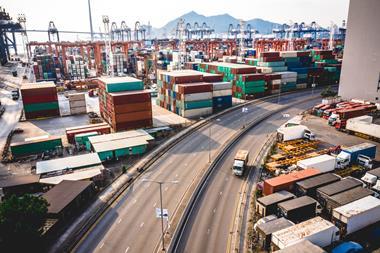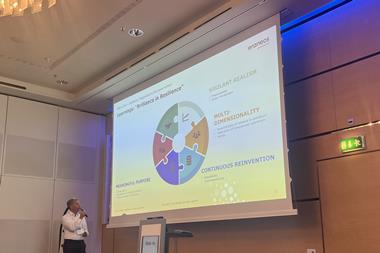Supply chain financing can protect against the financial vulnerability of primary producers and avoid future disruptions
Global food requirements are predicted to double by 2050. Strong international supply chains will be crucial to meeting this level of demand.
Currently, food manufacturers face multiple threats to their produce supplies, with shortages exacerbated by the Covid-19 pandemic and the Russia-Ukraine war.
One area of particularly high risk for food and beverage supply chains is the financial stability of smaller primary producers – in particular the management of cash flows for smaller farmers.
Risks presented by primary producers
The financial challenges facing farmers centre around the imbalance in size between themselves and their customers, which are frequently much larger distributors and retailers.
Long production times and seasonal cycles make it very difficult for farmers to keep a steady rate of cashflow throughout the year, but while their production is inevitably affected by environmental factors, the demand for finished food products remains constant.
As a result, farmers and processing plants can find themselves dealing with large inventory build-ups, bringing significant holding costs. With interest rates continuing to rise, the cost of borrowing is increasing and the future of many of these primary producers looks precarious.
In the UK, for instance, the average level of debt of farms in 2020/21 was around £246,100 (Gov.uk), while in the EU it was around €61,000 in 2018 (European Commission, Agriculture and rural development). For food manufacturers, this poses a threat to supply and must be taken seriously.
A number of Supply Chain Finance solutions exist which can help supply chain managers to help mitigate the risk of financial vulnerability among smaller suppliers.
Supply Chain Finance solutions are financial arrangements between two or more supply chain partners, generally based on a digital platform, which aim to strengthen some of the potentially weaker links in the supply chain.
Supply chain financing options
There are a variety of different types of arrangement, but some of the most common include reverse factoring, inventory financing, and, for the food and beverage sector specifically, tolling agreements and contract farming.
Reverse factoring works on the basis that larger buyers will be able to secure lower interest rates than the suppliers they are purchasing from. When adopting reverse factoring, suppliers can cash in their invoices ahead of the original terms in return for a small discount. The interest rate applied by the capital provider is negotiated by the large buyer and is therefore lower than the supplier would be able to secure on their own. This means that suppliers can access a loan at a lower cost and within a manageable timescale, allowing them to plan with more confidence, and the buyer is protected from disruption to supply.
A variation on this is inventory financing, whereby a larger company will provide a loan directly to a smaller supplier. In this case the inventory itself is used as collateral.
In addition to these two instruments, some innovative solutions are being proposed and successfully implemented in the food and beverage sector. Under a tolling agreement, a large buyer will own raw materials, while another company will process these, according to the specific requirements of the buyer, who may also provide equipment and specialised labour. This is typically applied when farmers need access to specialised equipment, expertise, or processes and has the effect of relieving the supplier of some significant capital costs.
In contract farming, one company will usually provide land, buildings, and other equipment, while a second company will provide labour and machinery. This is typically applied when manufacturers need to assist farmers financially or if they want to exercise more direct control over the supply chain.
To make these solutions work in practice, it’s essential to contextualise financial flows within the entire end-to-end supply chain rather than looking at them separately. This means simultaneously taking into account sales, production, purchasing, quality, finance and logistics.
Food and drink supply chains will always be highly complex, bringing together not only primary producers and manufacturers but also logistics providers, wholesalers, retailers and food service providers.
Building resilience in today’s international economic and political climate will involve addressing vulnerabilities among all players.
For food manufacturers, however, now is the time to take a good look at the financial stability of those primary producers and consider whether a supply chain finance solution might just help to avoid a future disruption.
Leonardo Terzoli is vice president and global lead for the Food and Beverage Industry at Efeso




















No comments yet